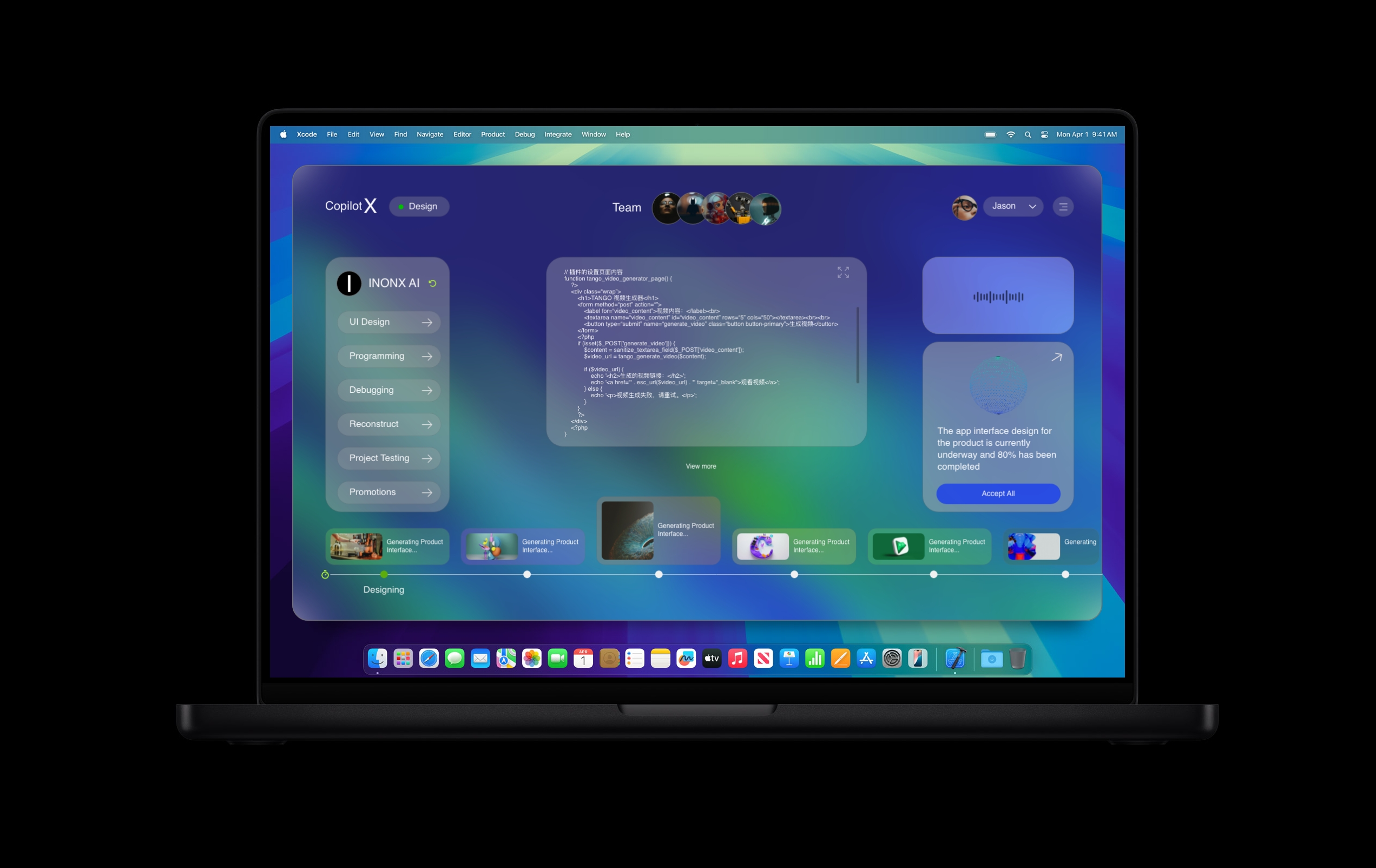Why AI digital transformation matters now
Few phrases capture boardroom attention like AI digital transformation. For business leaders it’s about moving from pilots and POCs to repeatable systems that change outcomes: faster customer response, fewer manual errors, lower cost of service, and new product capabilities. For engineers it’s about reliable pipelines, predictable latency and safe model updates. For product teams it’s about measurable ROI and manageable risk.
Beginner’s guide: What a practical transformation looks like
Think of a busy office that still relies on paper invoices. An end-to-end automation system replaces manual steps: images are scanned, text is extracted, business rules validate amounts, and exceptions route to a human. In many modern projects an LLM or specialized NLP model handles fuzzy cases, providing suggested decisions to the human operator. This is AI digital transformation in miniature — it replaces repeated human operations with automated, observable processes.
Key building blocks to recognize as a beginner:
- Data capture: ingestion from forms, email, API feeds, or IoT devices.
- Model inference: NLP, vision, or prediction models that make decisions or offer recommendations.
- Orchestration: a workflow engine that sequences tasks and handles retries.
- Human-in-the-loop: checkpoints for exception handling, approvals, and audit trails.
- Monitoring and governance: metrics, logs, lineage, and access control.
Architectural patterns for engineers
On the engineering side, successful initiatives follow clear patterns that balance reliability, latency, and cost. Below are three common system patterns and the trade-offs engineers should consider.
Synchronous API-first inference
When applications must respond in sub-second to low-second latency — chat, search, or live customer conversations — a synchronous model serving pattern is common. Models are exposed via REST/gRPC endpoints with autoscaling backends. This pattern favors low-latency hardware (GPUs, high-memory instances), warm pools to avoid cold start delays, and circuit breakers to prevent cascading failures.
Trade-offs: higher cost per inference and more fragile in traffic spikes unless robust autoscaling is in place.
Event-driven asynchronous pipelines
For batch processing, ETL, or workflows that tolerate minutes of delay, event-driven systems decouple producers and consumers using message buses (Kafka, Pub/Sub) and task queues. Orchestration frameworks like Temporal, Apache Airflow, or Argo Workflows coordinate long-running jobs and retries. This pattern improves throughput and resilience but requires careful design for idempotency and eventual consistency.
Agent and pipeline compositions
Modern automation often composes small, purpose-built services: OCR, entity extraction, rule engines, knowledge retrieval, and LLMs. Agent frameworks can orchestrate these pieces dynamically. The advantage is modularity and easier upgrades; the disadvantage is increased operational surface area and complex observability needs.
Platform choices and trade-offs
Choosing platforms determines how fast you can move and how much operational burden you accept. Listed below are common options and the key decision criteria.
- Managed model platforms (Vertex AI, OpenAI, Anthropic). Pros: fast to start, lower ops burden. Cons: recurring costs, vendor lock-in, and data residency constraints.
- Self-hosted serving (Seldon, BentoML, Ray Serve). Pros: full control, potential cost savings at scale. Cons: heavier ops, capacity planning, hardware procurement.
- Workflow orchestration (Temporal, Camunda, Airflow). Pros: reliable retries and state management. Cons: learning curve and operational overhead.
- RPA vendors (UiPath, Automation Anywhere) integrated with ML: Rapid deployment for legacy UI automation but less flexible for complex model-driven logic.
Gemini for NLP tasks and vendor comparison
Large model options matter. When teams evaluate models for text understanding and generation, they compare capabilities, latency, cost, fine-tuning support, and data controls. Using Gemini for NLP tasks can be appealing due to its multimodal and conversational strengths; however, teams must weigh cost-per-call, customization options, and whether sensitive data can be sent to a managed service. An alternative is self-hosted open models which reduce external exposure but often require GPU clusters, model optimizations, and privacy engineering.
Integration and API design for interoperable systems
APIs are the contract between business applications and AI systems. Good API design keeps systems flexible and testable:
- Design idempotent endpoints for asynchronous retries.
- Use schema contracts and model version headers so consumers can pin stable behaviors.
- Offer both explainability metadata and confidence scores with each response for downstream decision logic.
- Expose observability hooks: structured logs, traces, and metrics aligned to SLOs.
Deployment, scaling, and cost considerations
Practical deployments are driven by workload characteristics. Key signals to monitor and optimize:

- Latency percentiles (p50, p95, p99) — games change at the p99 level for SLAs.
- Throughput (requests per second) and utilization of inference hardware.
- Cold start frequency and warm pool hit rates when using serverless inference.
- Cost per inference and memory footprint — batch predictions can amortize cost, but increase latency.
Autoscaling policies must balance user experience with cost. For GPU-backed inference, consider warm standby nodes or model quantization to reduce memory and compute needs. For high-volume text tasks, caching and retrieval scoring can avoid unnecessary LLM calls.
Observability, reliability, and failure modes
Instrumenting automation systems is non-negotiable. Useful practices include:
- End-to-end tracing that links an input (email, event) to model calls, downstream database writes, and human review actions.
- SLOs for uptime, latency, and accuracy metrics; use alerting on SLI degradation rather than raw errors alone.
- Shadow testing and canary model rollouts so new models are validated on live traffic with minimal risk.
- Drift detection for inputs and labels; retraining triggers when performance deteriorates.
Security, compliance, and governance
Automation increases exposure to data leakage and compliance risks if not managed. Best practices:
- Encrypt data in transit and at rest; segment environments for development, test, and production.
- Implement least-privilege access controls for model management interfaces and data stores.
- Keep auditable logs of decisions and inputs for regulatory review and dispute resolution.
- Apply redaction, pseudonymization, or on-prem inference for sensitive data to meet regional regulations like the EU AI Act or GDPR.
Product and industry perspective: ROI and operational challenges
Organizational adoption succeeds when teams can demonstrate measurable benefits and a clear operational plan. Common ROI drivers include reduced manual processing costs, higher customer throughput, and improved compliance. Typical metrics product teams track:
- Automated rate: percentage of tasks fully handled without human escalation.
- Time-to-resolution improvements and average handling time reductions.
- Error reduction rates and compliance incident counts.
- Cost per transaction before and after automation.
Case example: a mid-sized insurer replaced a manual claims triage flow with an automated workflow combining OCR, rules, and a retrieval-augmented LLM. The result: 70% of claims auto-triaged, average intake time reduced by 60%, and auditability that improved regulatory reporting. The project had clear KPIs and a staged rollout that minimized disruption.
Implementation playbook for teams
Below is a practical, prose-based step-by-step playbook to move from pilot to production:
- Map the process: identify inputs, decisions, human touchpoints, and SLAs.
- Start small with a bounded use-case: narrow domain, clear labeling, and measurable outcomes.
- Select architecture: synchronous endpoints for low latency or event-driven pipelines for throughput.
- Choose a model strategy: managed models for speed-to-market or self-hosted for control.
- Design APIs and versioning strategy to support gradual model swaps.
- Implement observability and test harnesses: synthetic traffic, shadow testing, and canaries.
- Establish governance: data retention, approval flows, and compliance checklists.
- Plan a phased rollout: pilot, controlled expansion, and full production with continuous monitoring.
Future outlook and standards
AI-driven automation architectures will continue to converge on patterns that emphasize composability, observability, and governance. Expect growing emphasis on interoperability standards, provenance metadata, and model registries. Emerging policies like the EU AI Act and guidelines from NIST will shape how companies handle risk classification and documentation.
Tools and ecosystems will also evolve. Integration of task orchestration with model registries, feature stores, and policy engines will reduce friction between data science and platform teams. Teams evaluating options today should prioritize openness and the ability to move workloads between managed and self-hosted environments as needs change.
Practical automation is about predictable improvement. Start with measurable problems, instrument every step, and design systems that tolerate change.
Key Takeaways
AI digital transformation is a multidisciplinary effort that joins product thinking, engineering rigor, and operational discipline. Engineers should design for latency and reliability; product teams should measure ROI and risk; leaders should favor staged investments and robust governance. When you combine orchestration, reliable model serving, and mature observability, you get systems that deliver on the promise of automation without excessive operational risk. Whether you use managed APIs, self-hosted inference, or hybrid approaches like leveraging Gemini for NLP tasks in specific flows, the goal remains the same: predictable, measurable, and governable automation that scales.
